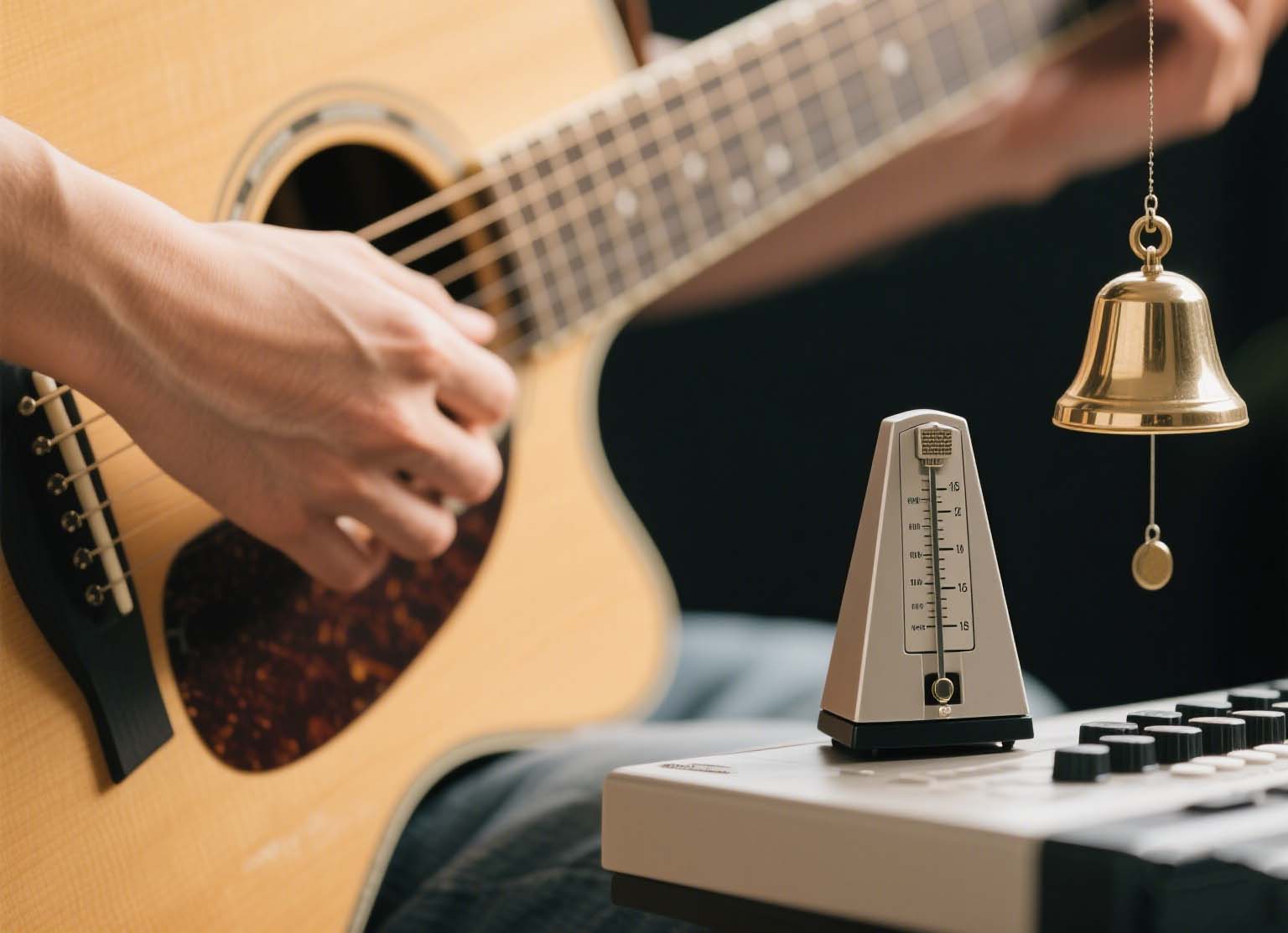Once you've mastered the basics of metronome practice, it's time to explore more advanced techniques that can help you develop greater rhythmic precision, versatility, and musicality. These techniques are designed for intermediate to advanced musicians who are looking to take their timing and rhythm skills to the next level.
Subdivision Practice
One of the most powerful advanced metronome techniques is subdivision practice. Instead of playing one note per metronome click, you'll play multiple notes between each click.
How to Practice Subdivisions:
- Set your metronome to a slow tempo (around 40-60 BPM).
- Play eighth notes (2 notes per click).
- Progress to triplets (3 notes per click).
- Move on to sixteenth notes (4 notes per click).
- Try more complex subdivisions like quintuplets (5 notes per click) or septuplets (7 notes per click).
This practice helps develop your internal subdivision and makes your timing more precise, even when playing complex rhythms.
Displacement Exercises
Displacement exercises involve shifting the metronome to weak beats or offbeats, forcing you to maintain the pulse internally.
Try these displacement patterns:
- Backbeat only: Set the metronome to click only on beats 2 and 4 in 4/4 time.
- Offbeat clicks: Have the metronome click on the "and" counts (the offbeats).
- One click per measure: Set the metronome to click only on beat 1 of each measure, forcing you to maintain timing through the rest of the bar.
These exercises strengthen your internal pulse and help you maintain steady time even when the metronome isn't marking every beat.
Polyrhythm Practice
Polyrhythms involve playing two or more different rhythmic patterns simultaneously. Practicing polyrhythms with a metronome can significantly improve your rhythmic independence.
Basic Polyrhythm Exercise:
- Set your metronome to a moderate tempo.
- Tap a 3-pattern with one hand (3 evenly spaced taps per measure).
- Simultaneously tap a 2-pattern with the other hand (2 evenly spaced taps per measure).
- Once comfortable, try more complex polyrhythms like 4:3, 5:4, or 7:5.
This practice is particularly valuable for drummers, pianists, and other musicians who need to maintain independent rhythms between different limbs or voices.
Tempo Modulation
Tempo modulation involves smoothly transitioning between related tempos using mathematical relationships.
Example Tempo Modulation Exercise:
- Start with your metronome at 60 BPM, playing quarter notes.
- Begin playing eighth note triplets (3 notes per beat).
- Mentally reframe these triplets as the new quarter note pulse (which would be 90 BPM).
- Change your metronome to 90 BPM to confirm your new tempo.
This technique is valuable for music that includes tempo changes and helps develop a more flexible sense of time.
Gradual Tempo Changes
Many digital metronomes allow for gradual tempo changes, which can be used to develop tempo control and flexibility.
Accelerando/Ritardando Practice:
- Set your metronome to gradually increase from 60 to 120 BPM over 2 minutes.
- Play a consistent pattern (like eighth notes) throughout the tempo change.
- Focus on maintaining evenness and precision as the tempo increases.
- Reverse the process with a gradual decrease in tempo (ritardando).
This practice helps you maintain control during tempo changes and builds adaptability in your playing.
Odd Meter Practice
Practicing in odd time signatures (like 5/4, 7/8, or 11/8) with a metronome can expand your rhythmic vocabulary and comfort level with complex meters.
Odd Meter Exercise:
- Set your metronome to a moderate tempo.
- Count and clap a 5/4 pattern (1-2-3-4-5, 1-2-3-4-5).
- Once comfortable, try playing scales or simple melodies in this time signature.
- Progress to more complex odd meters like 7/8 or 9/8.
This practice is particularly valuable for musicians who play progressive rock, jazz, or world music styles that frequently use odd meters.
Conclusion
These advanced metronome techniques require patience and consistent practice, but they can dramatically improve your rhythmic abilities. Start with just one technique and practice it for a few minutes each day before moving on to others.
Remember that the goal of all metronome practice is to develop your internal sense of time so that you can maintain steady, precise rhythm even without a metronome. These advanced techniques will help you internalize complex rhythmic concepts and become a more versatile, confident musician.





